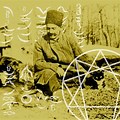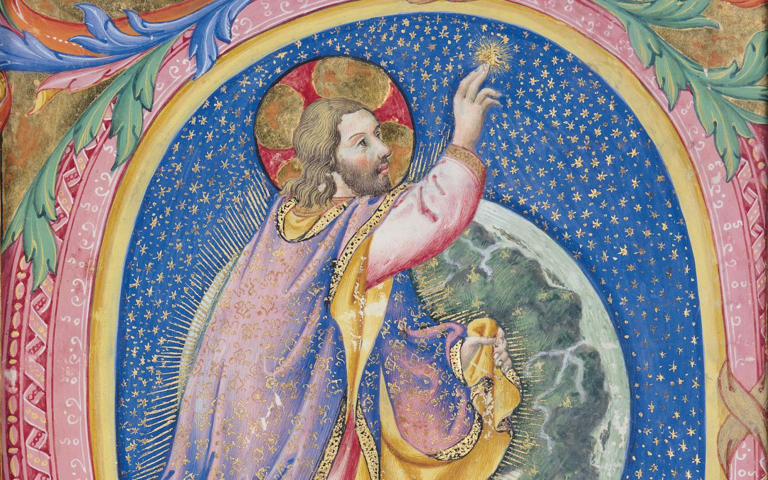After decades of struggle for a place in Israel, dozens of Black Hebrews face threat of deportation
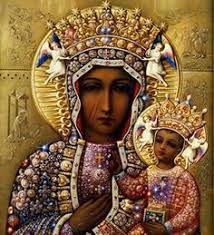









After decades of struggle for a place in Israel, dozens of Black Hebrews face threat of deportation
The African Hebrew Israelites of Jerusalem made their way to Israel from the United States in the 1960s
For two years, Toveet Israel and dozens of other residents of the Village of Peace have lived in fear.
Dimona, a city on the edge of the nation of Israel’s Negev Desert, has been her home for 24 years. Her eight children were born here and know no other country. Now, she and 44 other undocumented members of the African Hebrew Israelites of Jerusalem face deportation.
Receiving the order to leave two years ago was a “moment of disbelief” for Israel, 53. “I feel like the government has been merciless to me and my children,” she said.
The Black Hebrews, as the spiritual community's members are commonly known, first made their way to Israel from the United States in the 1960s. While members do not consider themselves Jewish, they claim an ancestral connection to Israel.
Around 3,000 Black Hebrews live in remote, hardscrabble towns in southern Israel. The Village of Peace, a cluster of low-slung buildings surrounded by vegetable patches and immaculate gardens in Dimona, is the community’s epicenter.
Over the decades, the Black Hebrews have made gradual inroads into Israeli society. After years of bureaucratic wrangling, about 500 members hold Israeli citizenship, and most of the rest have permanent residency.
But about 130 have no formal status and now face deportation. Some don’t have foreign passports and say they have spent their entire adult lives in Israel and have nowhere to go.
The community’s long fight to secure its status shines a light on Israel’s strict immigration policy, which grants people it considers Jewish automatic citizenship but limits entry to others who don’t fall under its definition.
The African Hebrew Israelites are one of a constellation of Black religious groups in the U.S. that emerged in the late 19th and 20th centuries and encompass a wide spectrum of Christian and Jewish-inspired beliefs.
Some fringe Black Hebrew groups in the U.S. hold extremist or antisemitic views, according to civil rights groups ADL and the Southern Poverty Law Center. The community in Dimona does not espouse such beliefs.
Reference: U Tube: The Independent
Purgatory in the Bible








Purgatory in the Bible
- Furthermore, entrance into Heaven demands this momentary suffering due to sins whose guilt has not been forgiven.
- Therefore, no one in purgatory will stay there forever nor go to hell. Discover mentions of purgatory in the Bible from the collection of scripture quotes below!
- Compiled by The BibleStudyTools Staff on 07/23/2018
Pope’s new ruling on blessings for same-sex couples does not change Catholic teaching - bishop
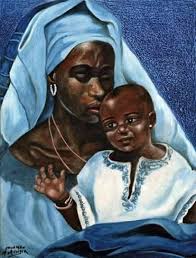







Pope’s new ruling on blessings for same-sex couples does not change Catholic teaching - bishop
Catholic bishop of Raphoe Alan McGuckian has rejected claims that Pope Francis’s declaration on blessing people in same-sex relationships is a change in church teaching on marriage and sexuality.
On Monday, Pope Francis published a document which set out the way in which a priest could impart a blessing to people in a same-sex relationship.
The pontiff stressed that such a blessing should not be confused with ritual or Catholic marriage, but said that in some circumstances individuals could be blessed.
The declaration re-affirmed that marriage was a lifelong sacrament between and man and a woman. However, some observers claimed the document marked a major change in Catholic teaching. The Pope’s document has also led to some Catholic bishops around the world issuing statements in opposition.
Bishop McGuckian, who like the Pope is a member of the Jesuit order, said the document was consistent with Pope Francis’s desire that the church reaches out “with mercy and love of Jesus” to everyone.
He said: “Some people are suggesting that this document heralds a change in the church’s teaching about marriage and sexuality. This is not the case.”
The Donegal church leader said Pope Francis’s document also sought to be consistent with the tradition which the Catholic church believed came from Jesus Christ. He pointed out that the Pope said no “liturgical blessing” could be given.
“What is envisaged here is an informal pastoral blessing, a prayer for divine grace to help people live their Christian lives ever more fully in line with the Gospel and to build on all that is good, true and beautiful in their lives. We are all sinners on the journey of conversion.”
Bishop McGuckian urged Catholics to read the document which, he said, contained “the tension between truth and mercy”.
“On the one hand it is a clear reaffirmation of the church’s teaching with an encouragement that nothing should be done that would lead to confusion about that. At the same time, it seeks to remind people who are living the Christian life in a less perfect way – that includes all of us – that God’s love never leaves us, while it always calls us to conversion,” Bishop McGuckian said.
- Story by Seamus McKinney • 4d: The Irish News:
Sacred Mysteries: The starwright who bursts forth like the sun
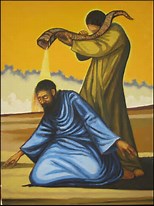







Sacred Mysteries: The starwright who bursts forth like the sun
We sang at church something that does belong to Advent instead of jumping the gun with a Christmas carol. It was Creator of the stars of night, which is none other than a translation by that indefatigable Victorian, J M Neale, of a seventh-century Latin hymn.
The original, Conditor alme siderum, seems to me to have a pure simplicity rather like the starlight it contemplates. In fact the siderum of which God is the dear creator, alme conditor, was regarded as the whole visible heavens, including planets, which, the medieval mind was very well aware, followed separate paths from the stars.
The hymn was incorporated into vespers, suitably, for it speaks of the world reaching evening, meaning that creation had grown old expecting the coming of Messiah, the Christ. Then in the third stanza, the hymn daringly deploys an energetic figure from the Psalms. Psalm 19 (18 in the Vulgate numbering) says that in the heavens, God “set a tabernacle for the sun, which cometh forth as a bridegroom out of his chamber”.
This hymn did not invent the metaphor of the Son of God arriving at Christmas like the sun. The prophet Malachi has the Lord of hosts saying: “Unto you that fear my name shall the Sun of righteousness arise with healing in his wings.” (That is why Charles Wesley in Hark! The Herald Angels Sing wrote: “Hail the Sun of Righteousness! Light and life to all He brings, ris’n with healing in His wings.” He knew well enough that God incarnate as a man does not have wings, but he happily employed the Hebrew figure of speech. I understand the Hebrew word kanaph signifies wings, a corner of the earth, the edge of a garment.)
Anyway, Conditor alme siderum boldly uses the idea of a chamber to stand for the womb of the Virgin Mary, from which Christ came forth like a bridegroom. The image hardly comes over in the translation by Neale, but Dr Eleanor Parker, of Brasenose College, Oxford, a great populariser of valuable medieval texts, has written a fascinating blog taking in a translation written 800 years before his.
A hymnal from 11th-century Canterbury puts this literal translation above each line of Latin, with the Old English beautifully written in red letters. It has Christ coming forth like “brydguma of brydbure” – bridegroom from bridal bower. (Also pleasingly, the Old English rendering of the Latin vespere mundi, “the evening of the world”, is there aefening middeard.)
Dr Parker has also blogged about a Middle English translation of the hymn, by William Herebert, a Franciscan friar and lecturer in theology at Oxford, who lived from about 1270 to 1333. He used the equivalent of our word wright (playwright, wheelwright) to translate conditor, “creator”, making the first line: “Holy wrouhte of sterres brryht”.
Something strange then befell the Latin hymn in the 17th century. Pope Urban VIII wanted hymns in the breviary to have a more classically correct clothing. In 1632 Conditor alme siderum was rewritten as Creator alme siderum. Of its 20 lines only one survived unchanged, the second, aeterna lux credentium “eternal light of believers”.
I suppose people got used to the new version, but after the Second Vatican Council in the 1960s a Latin version based on the original text was substituted. Among its peculiarities it changed an archaic but striking use of a Greek word in Latin form to address God: agie, from hagios, “Holy One”. Sancte has the same meaning, but doesn’t stand out like some uncut gem on an ancient reliquary.
- Opinion by Christopher Howse: The Telegraph
Articles-Latest
- Koran burning conviction sparks fury as blasphemy law 'returns to UK'
- Robert Francis Prevost - Pope Leo XIV
- Pope Francis' death follows recent health challenges. Here's what we know about how he died.
- Easter April 2025 - international Celebrations
- The Rule of the twelve psalms -Worthy is the Lamb
- Religion in Africa Before Christianity and Islam
- 6 The Origin of Yahweh
- Dumo Di Milano
- What Did the Crow Tribe Believe In: Discover The Beliefs!
- 7 Reasons Historic Christianity Rejects the Book of Enoch
- 8 Breathtaking Mountain Monasteries Around the World
- Ethiopian Bible is oldest and most complete on earth
- Muhammad Muhammad was a prophet and founder of Islam.
- World Day of the Poor – SVP Christmas Campaign 2024
- Pope Francis to open 5 sacred portals on Christmas Eve — for a ritual that’s never been done before
- The 144,000 in Revelation
- Over 73 dead bodies 'used for meditation', 600 crocs in a pond, found in two Thai temples
- Occultism: Western Occult Tradition
- What is a Mudra
- Blood Sacrifices: Ancient Rituals of Life and Death
Articles-Most Read
- Home
- Let There Be Light
- Plants that feel and Speak
- The Singing Forest
- The Singing Forest-2
- Introduction
- Meditation
- Using Essential Oils for Spiritual Connection
- Heaven Scent
- Plants that Feel and Speak-2
- Purification
- Making the Spiritual Connection
- Anointing
- Essential Oils: The unseen Energies
- The Sanctity of Plants
- The Aroma Of Worship - Introduction
- The Aroma Of Worship-Foreward
- Methods Of Use
- Spiritual Blending
- Handling and Storage




